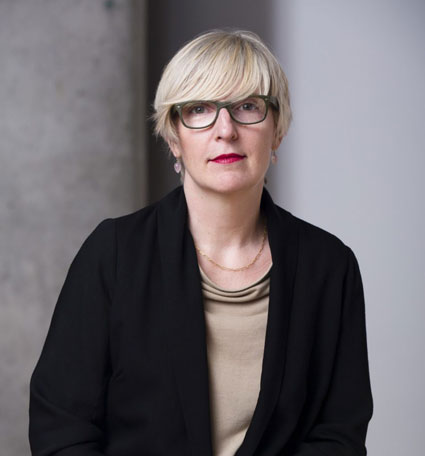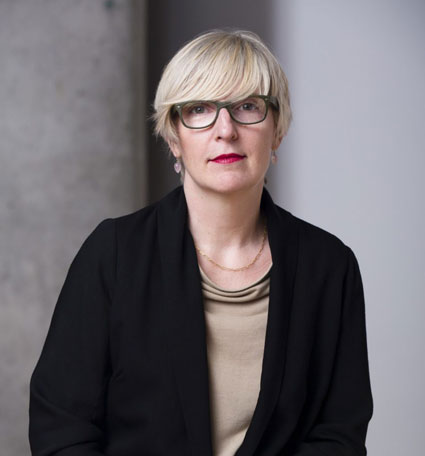[ad_1]

Helen Molesworth.
COURTESY MOCA
Last Tuesday, the news broke that Philippe Vergne, the director of the Museum of Contemporary Art in Los Angeles, had fired the museum’s chief curator, Helen Molesworth, whom Vergne himself had hired four years ago. As art critic Christopher Knight pointed out in the Los Angeles Times yesterday, one week after his initial report announcing the news, MOCA still hasn’t issued more than a vague statement citing “creative differences” to explain the dismissal—despite, as the headline put it, “crucial questions and too few answers.”
Evident issues at the museum include perceived clashes between Molesworth and Vergne over matters of diversity and MOCA exhibitions of artists including Doug Aitken and Carl Andre. Eyes have also been peering back to a dust-up involving Mark Grotjahn, the painter and also a MOCA board member who was in the news last month for having pulled out of being honored at a fundraising gala for the museum that had been scheduled for May.
All of that has figured into levels of complexity that were absent last week when, in the first article published on Molesworth’s dismissal, Knight reported that the artist and MOCA board member Catherine Opie had said Vergne fired Molesworth for reasons owing to “undermining the museum.” Publications including Artnet News, Hyperallergic, Frieze, and ARTnews have since reported extensively on the matter.
Further details about the Grotjahn episode have added to speculation over what “undermining” might mean in such a context. In particular, questions loom over Grotjahn having been selected for a solo exhibition at the museum that may have played a role in the split between Molesworth and Vergne. In the L.A. Times, Knight reported yesterday that the choice of Grotjahn as a gala honoree was made by only a few of museum’s trustees, without full knowledge among the board, and that the planned exhibition of his work worked in apparent opposition to Molesworth’s curatorial aims. He wrote that Molesworth had resisted Vergne’s request for the show—and “the more the director appealed, the more the chief curator dug in her heels.”
One avenue that has gone largely unexamined thus far in the conjecture over Molesworth’s alleged “undermining” are statements that she herself made in public during her time at MOCA. In general, she has been critical of museums and institutions—but, particularly in the past year, she aimed considerable criticism directly at MOCA itself.
In a lecture in January at the University of California, Los Angeles, Molesworth told an audience assembled by the school’s Department of Design Media Arts, “I don’t think there’s any way for MOCA to not be a white space. Not gonna happen. The DNA is too deep. We don’t have anyone of color on our board. Let’s start right there.”
Later in the talk, she said, “I’ve experienced what I feel is a high degree of freedom in my institutional life . . . even though I feel like there are days when I’m shackled to the wall.”
In November 2017, as part of a series called “Art and Dialogue” presented by the non-profit organization Artadia in San Francisco, Molesworth told Julia Bryan-Wilson, an art historian at the University of California, Berkeley, “I do think I do try to comport myself with a fairly high degree of ethics in the museum [and] that is increasingly . . . very difficult to do. Museum boards are increasingly comprised of exceedingly affluent people who don’t come from a philanthropic or cultural background. They often come from a financial background or a being-rich background. They have really imported their ways of thinking from for-profit models that are very much at play in not-for-profit spaces, so that makes for a certain kind of ethical way of being.”
Asked what “frictions or obstacles” she had faced in her work as a curator, Molesworth said, “The patriarchy is over in L.A.! . . . I am never under pressure to support the work of extremely affluent white male artists who are collected by the affluent white male people who run the museum. I wish I had that struggle, because then I could really test myself against what that might feel like.” No one present could have missed the irony in her voice.
Pressed to answer the question more seriously, she continued, pointing out ways that certain words can function as “coded” language: “I don’t think there is a curator in this country who has the kind of exhibition history I have . . . who hasn’t struggled with the pushback around our stated interests. . . . That pushback comes in many forms. Sometimes it comes in the form of the very clear-cut, demonstrable insistence that the exhibition schedule be more ‘balanced’—code word. . . . Everything that happens in museums is a microcosm of what happens in the world. . . . I’ve been told that I have lot of ‘swagger’—code: gay, code: black. I have been told: Do I have to look at everything through the lens of identity politics?”
Then she appeared to address MOCA specifically, in reference to excitement among some there over photographs of African-American artist Kerry James Marshall’s exhibition: “I have been told that people were really, really happy about the Kerry James Marshall show because they couldn’t wait to see the photographs of all the children sitting on the floor in front of the paintings”—because, by way of reasoning she seemed to attribute to hypothetical observers, “the work of African-American artists is essentially a moralizing tale for small brown children.” She continued, gesturing around the room: “It’s not really for me, it’s not really for us, because we know. But”—again invoking a hypothetical onlooker—“ ‘It’s great for black kids.’ ”
Speaking about her general struggles as a curator, Molesworth continued, “It’s a fight. It’s a battle. Some aren’t committed to fighting it, and some people fight it intermittently, because it’s hard. In a way, it’s a little easier, now, to ‘fight.’ There’s more language for it; there’s more support for it.”
Some of Molesworth’s statements have been more sanguine. In July 2015, in a talk with Yale Radio WIBC, on a program called “The Art World Demystified,” she addressed the subject of board members, saying, “Directors and chief development officers are always looking for interesting people who have the means and the psychological and intellectual capacity to serve on a board. Serving on a board is a lot of work, so it’s not just money. I mean, you really have to have people who are civically minded, interested in the public sphere, interested in not-for-profit management. It’s a whole complicated thing. . . . You educate your board, and your board educates you. … I’ve learned so much in the last 15 years from board members. They work in the for-profit sector in very powerful and effective ways. There was much to learn from them.”
She continued: “If you think structurally, if someone has built a business up from scratch, that person probably has really interesting capacity to think about systems and analysis and structure. And there might be things to be learned from those structural things into a museum—and vice-versa. There are values that the museum is invested in and promotes that board members can learn from.”
In 2014, at a panel at Los Angeles’s Hammer Museum, about two months into her tenure at MOCA, Molesworth, who was previously chief curator at the Institute of Contemporary Art, Boston, provided a view into how she was able to diversify her presentations there: “At the ICA Boston, I realized that if I made certain arguments very explicitly about identity, I would not be successful,” she said. “And so . . . I never made a stink about how I had systematically committed to shows by African-American women in the galleries.”
With her programming in place, “You couldn’t go to a rotation of exhibitions at the ICA Boston without encountering LaToya Ruby Frazier, Mickalene Thomas. You just couldn’t be there [when] there wasn’t someone, often a woman, of color represented on the floor. But I do think I was a little devious about that. I’m blowing my cover here. I didn’t say, ‘That is what I am doing’—even though I knew it was what I was doing.”
On the same subject, she said, “If I said it was what I was doing, I would run afoul of certain restrictive conversations. We are not post-sexist, we are not post-racist. We are living in a very complicated time.”
[ad_2]
Source link

